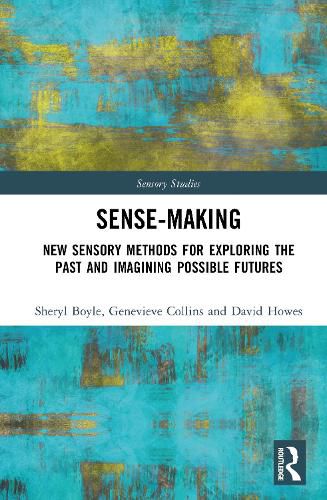Readings Newsletter
Become a Readings Member to make your shopping experience even easier.
Sign in or sign up for free!
You’re not far away from qualifying for FREE standard shipping within Australia
You’ve qualified for FREE standard shipping within Australia
The cart is loading…






In this highly innovative work, the senses are liberated from the confines of the present to serve as vehicles for accessing other historical periods and imagined futures. Sense-Making builds on the burgeoning field of sensory ethnography by introducing a pair of methodologies- sensory (re)construction and sensorial extrapolation-expressly devised to facilitate time-travel.
The first part offers a survey and critique of extant work in sensory archaeology and sensory futures. The second part presents a case study of sensory (re)construction in action, focusing on Thornbury Castle (1508-1521) in the UK. The third part probes the life of the senses on the 'final frontier', the 'next habitat' of humanity - namely, outer space. These sensory case studies are not purely architectural or purely futuristic. They are, at the same time, exercises in 'arts-based practice' or 'research-creation,' where the authors do not just carry out bibliographic research and write about pasts and futures, they make them.
Sense-Making is necessary reading for the international community of sensory studies scholars, as well as those with interests spanning material culture, museum and heritage studies, visual and auditory culture, experimental psychology, design, and digital technology.
$9.00 standard shipping within Australia
FREE standard shipping within Australia for orders over $100.00
Express & International shipping calculated at checkout
In this highly innovative work, the senses are liberated from the confines of the present to serve as vehicles for accessing other historical periods and imagined futures. Sense-Making builds on the burgeoning field of sensory ethnography by introducing a pair of methodologies- sensory (re)construction and sensorial extrapolation-expressly devised to facilitate time-travel.
The first part offers a survey and critique of extant work in sensory archaeology and sensory futures. The second part presents a case study of sensory (re)construction in action, focusing on Thornbury Castle (1508-1521) in the UK. The third part probes the life of the senses on the 'final frontier', the 'next habitat' of humanity - namely, outer space. These sensory case studies are not purely architectural or purely futuristic. They are, at the same time, exercises in 'arts-based practice' or 'research-creation,' where the authors do not just carry out bibliographic research and write about pasts and futures, they make them.
Sense-Making is necessary reading for the international community of sensory studies scholars, as well as those with interests spanning material culture, museum and heritage studies, visual and auditory culture, experimental psychology, design, and digital technology.